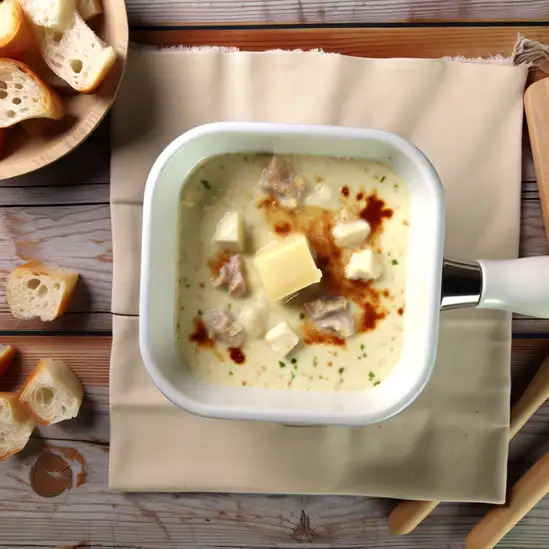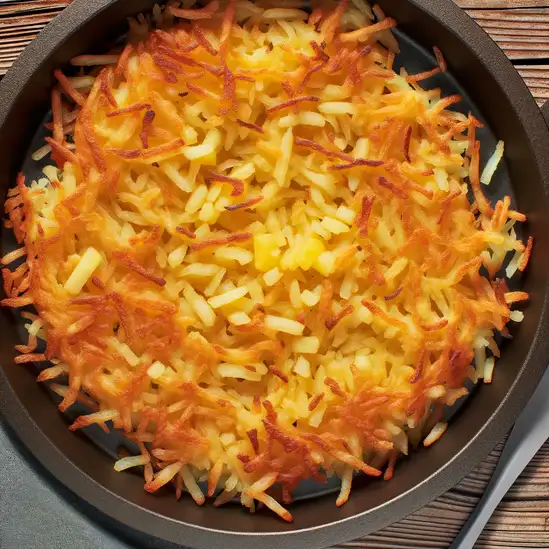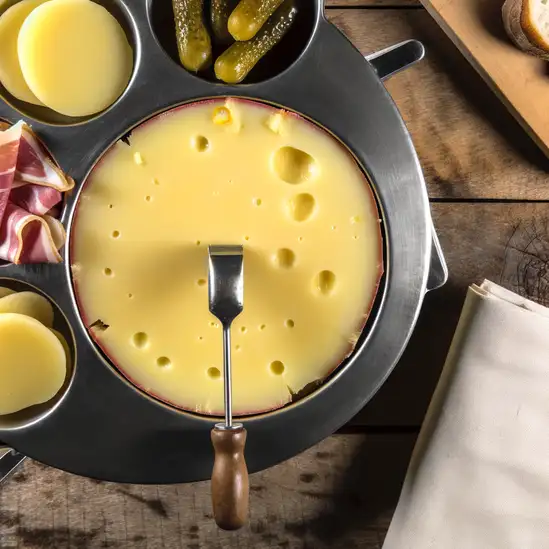



If you’re dreaming of a place where the air feels impossibly fresh and the mountains seem to hug you close,Saas-Fee is that kind of magic. Nestled high in the Swiss Alps,this village has a cozy,almost storybook charm that instantly makes you slow down and breathe it all in. Walking through its narrow streets,you’ll hear the gentle clatter of wooden shutters and the soft murmur of locals greeting each other,while the scent of pine and woodsmoke drifts through the crisp mountain air. It’s the kind of place where time feels a little softer,and every corner invites you to pause and soak up the view. What really sets Saas-Fee apart is its blend of rugged alpine spirit and warm,welcoming culture. The village is car-free,so you’re surrounded by the peaceful sounds of nature rather than traffic,and the traditional chalets with their flower-filled balconies give it a timeless feel. In the evenings,the glow from cozy restaurants spills onto the cobblestones,and you can savor hearty Swiss dishes like raclette or fondue,paired with a glass of local wine that tastes like the mountains themselves. Whether you’re skiing down pristine slopes,hiking trails that open up to jaw-dropping glaciers,or simply sitting on a bench watching the sun set behind towering peaks,Saas-Fee wraps you in a quiet kind of wonder. It’s a place that invites you to connect—with nature,with tradition,and with a slower,sweeter rhythm of life.
The information on this page is currently being reviewed by Tripkliq and should be used as a guide only
Eng word: Hello
Eng pronunciation: hah-loh
Local language: Hallo
Eng word: Goodbye
Eng pronunciation: owf vee-der-zay-en
Local language: Auf Wiedersehen
Eng word: Thank you
Eng pronunciation: dahn-kuh
Local language: Danke
Eng word: How much
Eng pronunciation: vee feel
Local language: Wie viel
Eng word: Toilet
Eng pronunciation: toy-let-tuh
Local language: Toilette
Eng word: Help me
Eng pronunciation: hil-fuh
Local language: Hilfe
Eng word: Yes
Eng pronunciation: yah
Local language: Ja
Eng word: No
Eng pronunciation: nine
Local language: Nein
Eng word: Excuse me
Eng pronunciation: ent-shool-dee-goong
Local language: Entschuldigung
Saas-Fee was first mentioned in historical records in 1304. The village has a long history and has evolved from a small farming community to a popular tourist destination.
Tourism in Saas-Fee began to develop in the late 19th century. The first hotel, Hotel Dom, was built in 1881, marking the beginning of the village's transformation into a renowned tourist resort.
Saas-Fee is known for being a car-free village. This policy was implemented in 1951 to preserve the natural beauty and tranquility of the area, making it a unique and peaceful destination for visitors.
The first ski lift in Saas-Fee was constructed in 1951, which significantly boosted the village's popularity as a winter sports destination. Today, Saas-Fee is known for its extensive ski facilities and stunning alpine scenery.
The Allalin Ice Pavilion, located at an altitude of 3,500 meters, was opened in 1983. It offers visitors a fascinating glimpse into the world of glaciers with its ice sculptures and tunnels.
The Metro Alpin, the highest underground funicular railway in the world, was inaugurated in 1984. It connects the Felskinn station to the Mittelallalin station, providing easy access to the glacier and ski slopes.
Saas-Fee is known for its well-preserved traditional Valais architecture. The village features charming wooden chalets and barns, some of which date back several centuries, offering a glimpse into the region's architectural heritage.
The surrounding region of Saas-Fee is part of the Swiss Alps Jungfrau-Aletsch, a UNESCO World Heritage Site. This designation highlights the area's outstanding natural beauty and geological significance.
The Saas Valley is home to several historical churches, including the Baroque-style Church of St. Bartholomew in Saas-Grund, built in the 17th century. These churches reflect the region's rich cultural and religious history.
In Saas-Fee, the most common Power Adaptor is Type C, Type J.



A classic Swiss dish made by melting cheese and served in a communal pot, where diners dip pieces of bread using long forks.

A Swiss potato dish, similar to hash browns, made from grated potatoes that are pan-fried until crispy and golden.

A semi-hard cheese that is melted and scraped onto boiled potatoes, pickles, and cured meats, often enjoyed in a social setting.

A hearty dish made with pasta, potatoes, cream, cheese, and often served with stewed apples, reflecting the alpine comfort food tradition.

A traditional Swiss bread, braided and often enjoyed on Sundays, characterized by its soft texture and slightly sweet flavor.
Imagine stepping into a city where every corner feels like a scene from a timeless painting—Venice is exactly that kind of place. The moment you arrive,the gentle lapping of water against ancient stone buildings wraps around you like a soft melody. Instead of streets,there are winding canals,and instead of cars,gondolas glide silently beneath ornate bridges,their oars dipping rhythmically into the emerald water. The air carries a mix of salty sea breeze and the faint aroma of fresh espresso and baked pastries from nearby cafés,inviting you to slow down and savor the moment.
Venice has this magical,almost dreamlike quality. The light here is different—soft and golden in the mornings,casting long shadows on the labyrinth of narrow alleys and colorful facades. You’ll find yourself wandering without a map,getting delightfully lost among the bustling markets,where vendors call out in melodic Italian,selling everything from fresh seafood to vibrant Murano glass. The city’s rich history whispers from every corner,from the grandeur of St. Mark’s Basilica to the quiet charm of tucked-away piazzas where locals sip wine and chat as if time has paused.
What makes Venice truly unforgettable is its rhythm—slow,intimate,and deeply human. It’s a place where you can hear the laughter of children playing by the water,the clinking of glasses in cozy trattorias,and the soft hum of a street musician’s violin. Visiting Venice isn’t just about seeing a city; it’s about feeling its heartbeat,tasting its flavors,and becoming part of its endless story.
Imagine stepping into a place where the sun seems to linger just a little longer,casting a golden glow over pastel-colored buildings and the sparkling Mediterranean Sea. That’s Nice for you—a city that effortlessly blends the relaxed charm of a seaside town with the vibrant pulse of French culture. Walking along the Promenade des Anglais,you’ll feel the gentle sea breeze on your skin and hear the rhythmic crash of waves mingling with the laughter of locals and tourists alike. The scent of freshly baked baguettes and rich espresso drifts from cozy cafés,inviting you to pause and savor the moment.
Nice has this wonderful rhythm,a mix of old-world elegance and laid-back joie de vivre. The narrow streets of the Old Town buzz with life—vendors calling out their colorful produce,the clinking of glasses in bustling bistros,and the occasional melody from a street musician. It’s a place where you can lose yourself exploring vibrant markets,then find a quiet spot to watch the sunset paint the sky in shades of pink and orange over the harbor.
What really makes Nice stand out is its effortless blend of cultures—French sophistication meets Mediterranean warmth. Whether you’re nibbling on a socca (a chickpea pancake) or sipping rosé at a terrace café,there’s a genuine friendliness that makes you feel like you belong. It’s a city that invites you to slow down,breathe deeply,and soak in the simple pleasures of life by the sea.
Barcelona feels like a vibrant mosaic where every corner pulses with life and color. The moment you step onto its sun-drenched streets,you’re wrapped in a warm Mediterranean embrace—salt in the air,the distant hum of waves mingling with lively chatter from bustling cafés. The city’s energy is contagious,a blend of old-world charm and modern creativity that invites you to slow down and savor each moment.
Wandering through the narrow alleys of the Gothic Quarter,you’ll hear the soft clinking of glasses and the melodic strum of a street guitarist,while the scent of fresh-baked bread and roasting coffee drifts from cozy bakeries. Barcelona’s architecture is like a living art gallery—Gaudí’s whimsical buildings,with their undulating lines and vibrant mosaics,feel almost dreamlike against the bright blue sky. It’s a place where history and imagination dance together.
Food here is a celebration in itself. Imagine biting into a perfectly crispy,golden croqueta or savoring the rich,smoky flavors of a traditional paella,all washed down with a glass of chilled cava. The city’s markets,like La Boqueria,burst with colors and aromas—ripe tomatoes,fresh seafood,and fragrant herbs—that make you want to taste everything.
What makes Barcelona truly special is its spirit:a city that lives passionately,where locals and visitors alike gather to share stories,laughter,and the simple joy of being in a place that feels both timeless and alive. Trust me,once you’ve experienced it,you’ll carry a piece of Barcelona’s magic with you long after you leave.
If you ever find yourself wandering through the sun-drenched streets of Dubrovnik,you’ll immediately feel like you’ve stepped into a living storybook. The city’s ancient stone walls rise proudly against the sparkling Adriatic,and as you stroll along the marble-paved Stradun,the salty sea breeze mingles with the scent of fresh pine and blooming bougainvillea. There’s a rhythm here—a gentle hum of life where history and modern charm dance together effortlessly.
Dubrovnik’s character is woven into every corner:the clatter of café cups,the murmur of locals chatting in cozy taverns,and the distant call of seagulls overhead. You can almost taste the city in the air—briny and fresh,with hints of grilled seafood and ripe figs from the markets. Sitting at a seaside restaurant,watching the sun dip behind the fortress walls,you’ll savor dishes bursting with Mediterranean flavors,paired with a glass of crisp Croatian white wine.
What makes Dubrovnik truly special is how it balances its rich past with a vibrant present. The city’s narrow alleys invite exploration,revealing tucked-away galleries,artisan shops,and lively squares where music spills out into the streets. Whether you’re tracing the footsteps of ancient mariners or simply soaking up the golden light on a quiet terrace,Dubrovnik feels like a warm embrace—inviting,timeless,and utterly unforgettable.
Athens feels like stepping into a living storybook where ancient history and vibrant modern life dance together effortlessly. The moment you wander through its sun-drenched streets,you’re greeted by the warm hum of chatter spilling from cozy cafés,the scent of freshly baked bread mingling with salty sea air. The city’s heartbeat is unmistakable—whether it’s the clinking of glasses in a bustling taverna or the distant echo of footsteps climbing the Acropolis at sunset.
What makes Athens truly captivating is its raw,unpolished charm. You’ll find crumbling ruins nestled beside colorful street art,and locals who greet you with genuine smiles and a generous spirit. The city pulses with creativity—from lively markets where vendors call out their freshest olives and figs,to rooftop bars where you sip ouzo while the Parthenon glows golden against the twilight sky.
Athens invites you to slow down and savor its layers. Taste the tang of lemon in a perfectly grilled souvlaki,feel the rough stone of ancient columns beneath your fingertips,and listen to the mix of languages and laughter that fills the air. It’s a place where every corner tells a story,and every meal feels like a celebration. If you want a city that’s alive with history yet buzzing with contemporary energy,Athens will wrap you in its warm,timeless embrace.
Lisbon feels like a city that’s been gently kissed by the sun and the sea,where every street corner hums with life and stories. Imagine wandering through narrow,cobbled alleys lined with pastel-colored buildings,their azulejo tiles catching the light just right. The air carries a mix of salty ocean breeze and the rich aroma of freshly baked pastéis de nata—those flaky custard tarts you’ll find in every bakery. There’s a rhythm here,a kind of laid-back energy that invites you to slow down and soak it all in.
You’ll hear the soulful strains of fado music drifting from cozy taverns,a haunting soundtrack that feels like the city’s heartbeat. Locals chat animatedly over glasses of vinho verde or ginjinha,a cherry liqueur that’s as sweet as the conversations. The city’s hills offer stunning views where terracotta rooftops spill down toward the Tagus River,and the sunlight shimmers on the water like a thousand tiny mirrors.
Lisbon’s charm lies in its blend of old and new—ancient trams clatter past sleek street art,and centuries-old castles overlook buzzing markets filled with fresh seafood and vibrant produce. It’s a place where history and modern life dance together effortlessly,inviting you to explore,taste,and feel its unique pulse. Trust me,once you’ve wandered through its neighborhoods and tasted its flavors,Lisbon stays with you long after you leave.
Fraudsters may sell fake or invalid ski lift passes at discounted rates, leaving tourists unable to access the slopes and losing their money.
Tourists may encounter unfavorable exchange rates or hidden fees at unofficial currency exchange points, losing money in the process.
Scammers create fake rental listings for chalets or apartments in Saas-Fee, targeting tourists looking for accommodations. Victims pay deposits or full amounts, only to find out the property doesn't exist.
Unlicensed individuals may pose as professional tour guides, charging high fees for subpar or non-existent services.
Unlicensed taxi drivers or private transport providers may overcharge tourists for rides, especially during peak seasons when demand is high.
While rare in Saas-Fee, pickpocketing can occur in crowded areas, especially during festivals or events, targeting distracted tourists.
Some dishonest rental shops may charge hidden fees or claim damages to equipment that were already present, forcing tourists to pay extra.
Switzerland has strict regulations regarding the use of drugs. The possession, sale, and use of illegal drugs are prohibited and can result in severe penalties. Cannabis is partially decriminalized, meaning small amounts for personal use may result in a fine rather than criminal charges, but this can vary by canton. Tourists should be aware that drug laws are strictly enforced and should avoid any involvement with illegal substances.
In Saas-Fee, Switzerland, smoking is generally prohibited in enclosed public spaces, including restaurants, bars, and public transportation. There are designated smoking areas where smoking is allowed. It is also important to be mindful of local regulations regarding smoking in outdoor public spaces, as some areas may have restrictions.
Vaping in Saas-Fee follows similar regulations to smoking. It is prohibited in enclosed public spaces such as restaurants, bars, and public transportation. Tourists should look for designated vaping areas and be aware of any local restrictions on vaping in outdoor public spaces.
What are other people saying about Saas-Fee?
Recent Social posts about Saas-Fee
There is nothing to show you for now.